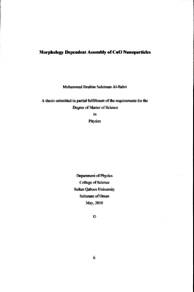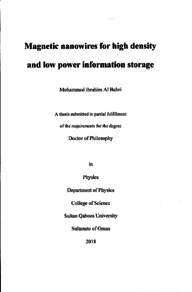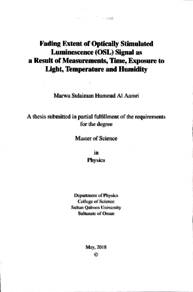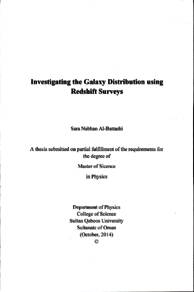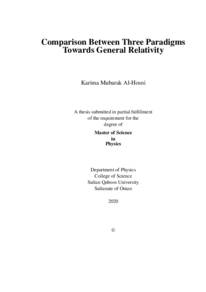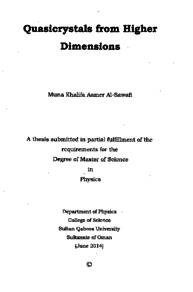وثيقة
Morphology dependent assembly of CuO nanoparticles.
الناشر
Sultan Qaboos University
ميلادي
2010
اللغة
الأنجليزية
الموضوع
الملخص الإنجليزي
The CuO nanoparticle morphologies and assemblies on native oxide terminated silicon substrates have been studied using X-ray diffraction, Transmission Electron Microscope and Atomic Force Microscopy. The observed CuO morphologies were profoundly modulated by the preparation temperature of the samples. In addition to Cuo phase, samples prepared at 2 °C exhibit nanorod structures associated Cu(OH)2 phase. Depending on the solvent used for the colloidal sample preparation, the spin coated rods transformed into whiskers, 3D structures and fingering patterns. A model based on clustering and mass transport of solvent and nanoparticles was proposed to explain the whiskers formation, Transverse fingering patterns development was attributed to the coalescence of holes (defects) which are droplet terminated in the dewetting layer. Increasing the sample preparation temperature to 25 "C resulted in nanoleaves formation. Axial and lateral expansions of the accumulated rods led to the formation of the leaf structure. Upon spin coating of the colloidal suspension containing the leaves and toluene, the former dissolved inducing opaque structures which disintegrated into particles. Samples prepared at 60 °C and 100 °C exhibit CuO nanobelt and small rod structures respectively. Corresponding films of these structures are characterized by the disintegrated nanobelts particles trapped in the droplets and connected chain-like particles resulted from the breakdown of the small rods. The evaporation rate morphology interplay is discussed through the variation of the instability wavelength arising from spinodal dewetting process of toluene.
المجموعة
URL المصدر
قالب العنصر
الرسائل والأطروحات الجامعية

